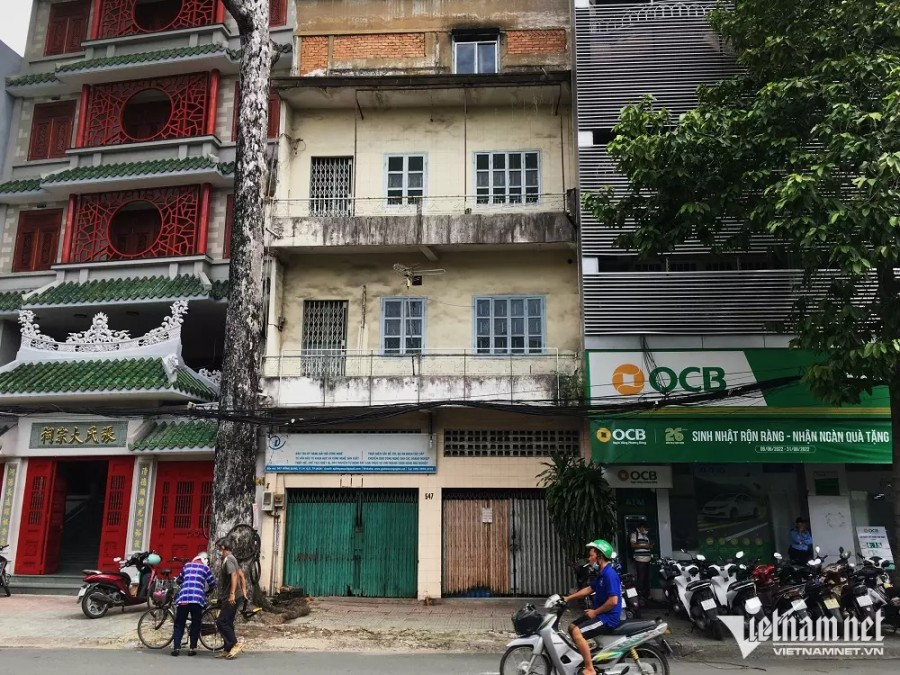
Public land and assets valued at multi-trillions of dong have not been fully utilized and many land plots have been left deserted for years. Still, localities continue to complain about the lack of capital.
The courtyard of house No 185/4 on Pham Ngu Lao street in district 1, HCM City, is being used as a parking lot where motorbikes of clients of the nearby restaurant are gathered. The other parts of the house (76.8 sqm in land area and 386.4 sqm in usable floor area) have been left unused for many years.
The house is located on an advantageous position in the Bui Vien street, dubbed ‘Western street’ and the Pham Ngu Lao neighborhood, which is just a few steps away from the main road and 23/9 Park. The houses in the area are quoted at VND500-700 million per sqm on one real estate website.
The street-front house No 547 on Hong Bang street in district 5, located in the central area of the district, is another example of waste in using public assets. The 4-storey house (61.5 sqm in land area and 183 sqm in usable floor area), with rusty doors and moldy walls has been left unused for four years. According to real estate experts, the land in the area is priced at VND350-400 million sqm.
Both houses belong to the Institute for Mechanics and Applied Informatics under the Vietnam Academy of Science and Technology. The total value of unused public assets amounts to VND60 billion.
According to the HCM City Finance Department, as of December 31, 2017, total land and houses of central agencies in the city had reached 2,000 addresses. At that time, the agencies wanted to continue to manage and use 1,307 addresses. To date, no one has assessed the efficiency of the use of assets worth trillions of dong.
In January 2018, Resolution 54/2017/QH2014 on piloting specific policies for HCM City took effect, which says that HCM City can retain 50 percent of collections from land use rights when selling public assets on land managed by centrally run agencies, organizations and units. The money would be used for socio-economic infrastructure development.
The resolution aims to help HCM City get more resources for development. However, over the last four years, the city has not received any dong from the source of revenue, while the pilot policy is about to expire.
Only two houses on Pham Ngu Lao and Hong Bang streets have had approval from competent agencies for sale. However, the sale still has not been done.
According to a member of the HCM City People’s Council, the Ministry of Finance has regulations on public asset management but there is only a list of assets, and there is no sufficient information about the assets’ status and value.
“How do involved parties dare transfer, sell or lease houses when they don’t have information about the properties?” he said.
Thirst for money and ineffective use of public assets
A report on HCM City’s macro economy released by the University of Economics and Law and the Banking Technology Research and Development Institute shows that HCM City still has not collected any money under Resolution 54 for many reasons. The cooperation of ministries and branches is needed to solve the problem.
HCM City has great resources but it cannot use them. Associate Prof Dr Vu Hai Quan, director of the HCM City National University, said that the use of public properties in HCM City remains ineffective. This is an extremely important source of revenue.
HCM City National University is a public non-business unit operating under the autonomy regime, so the budget for regular expenses has been decreasing. The school has land belonging to three member schools (HCM City University of Natural Sciences; University of Social Sciences and Humanities, and HCM City University of Technology). However, the mechanism allowing the schools to co-exploit and use the public land remains unclear. The projects on cooperation in training and scientific research also still have not been implemented.
If public assets are exploited effectively, this helps in diversify schools’ revenue sources. Similarly, if HCM City can use public land assets, it will have more resources for re-investment in infrastructure.
Prof Nguyen Thi Canh said that leaving public land unused for dozens of years is a big waste of resources. It would be better to let localities manage public assets because they understand what the assets can be used for. However, central agencies want to hold the assets, but then do not use them.
Tran Chung